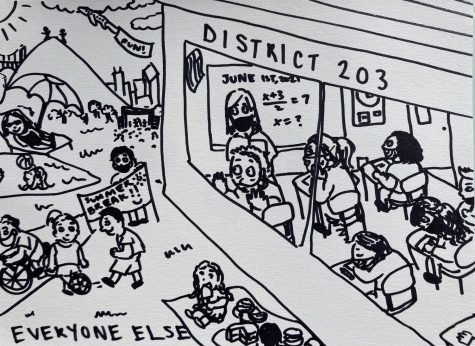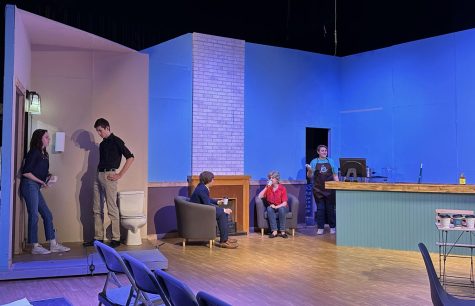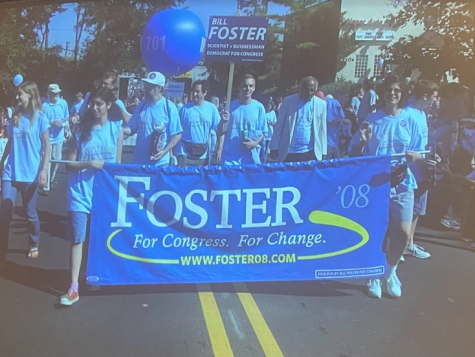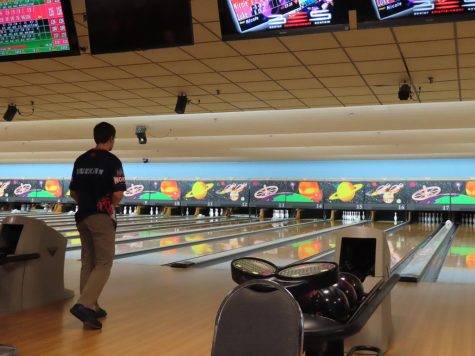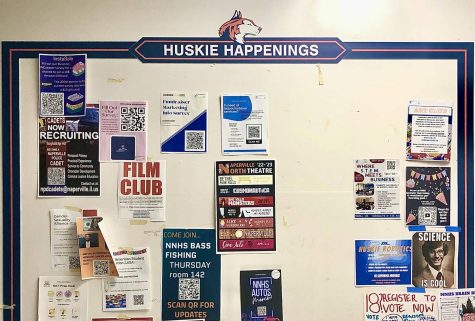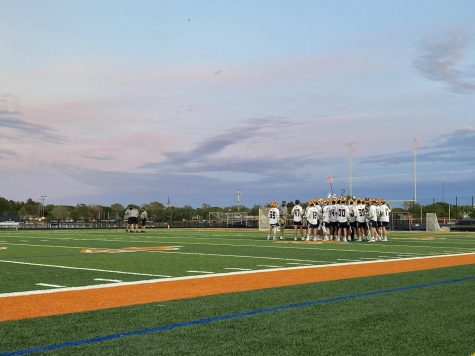Can teenagers instigate change through social media?

At age 13, Juan Campolargo found himself at a new school, in a new country, with a new language. Just four years later, the college freshman now has a weekly newsletter and blog where he posts essays followed by 300 people, has founded digital marketing consultancy company Optimum Smart, starred on two TedTalks, and has written the book Generation Optimism. When Campolargo moved to the United States from Venezuela, he jumped into his freshman year at Metea Valley High School, telling himself he would learn English in a day. While that goal may have been a bit optimistic, his motivation allowed him to become nearly fluent in only six months. Campolargo is an optimist, a changemaker. His tool: social media. He saw his access to the fast, free and far reaching digital world as an opportunity to create change in the world, and he took advantage.
“I think something … that a lot of people our age don’t quite understand, is that the era and the time we are living in could be described as a time of leverage… What the era of leverage means is that we don’t need permission, because social media is free to reach people,” Campolargo said.
Much of the world views the hefty amount of time teens spend on electronics as unproductive; the average time spent on social media was 144 minutes per day as of 2019. However, Campolargo’s example instigates the question: can teens use their social media platforms to create change in their communities and beyond?
Naperville North Dean of Student Activities Jennifer Baumgartner speaks positively of teen’s activism on social media, which she has witnessed over her 26 years at NNHS. Baumgartner applauds NNHS student’s overall responsible use of social platforms to create an impact in their community, and credits student initiative for starting the push for Elyssa’s Mission at NNHS, a program aiming to prevent teen suicide.
“One of the big things…over the years I have been here, that I’ve really seen our students take a stand on is mental health… our kids have done some amazing things to get the mental health awareness out there,”Baumgartner said.
Many clubs at North have recognized the potential of social media as a tool to promote themselves and their causes. NNHS Junior State of America Vice President and Director of Activism for Midwest JSA, junior Claire Liu, says they are mainly active through Instagram and Facebook, using these platforms to defuse their information into the community, in an attempt to have an impact not only on other teens, but on all community members.
“Obviously with COVID-19, communication has been dropped on a certain level, so I think at the core, social media provides us a way to communicate with others and spread awareness… Whether that’s writing petitions, or advertising for actual organizations, any way we can provide education and resources for people is in some way affecting change,” says Liu.
With political, social and economic tensions high in the US, many teens have turned to social media as an outlet for their opinions on certain hot topics. Posting stories on Snapchat or Instagram and using hashtags has become a primary method for young adults to engage in social activism. On Chicago’s North side, several students from Walter Payton College Prep founded the instagram page @bipoc.payton as a place for black, indigenous and other people of color to share their stories, hoping the page will force the community to listen to the experience of minority students.
Yet not all are convinced of teen’s influence through social media. Senior Jack LaMorte, President of the Conservative club, expresses doubt regarding the amount of change that comes from a teen’s quick-share posts, and suggests other ways to create change.
“I do think there is a better way to create change in a community,” LaMorte said. “I think that you can get involved in organizations or campaigns and get officials elected that support positions that you support, or join organizations that are pushing specific issues. I think that is way more effective than posting on social media.”
Based on over ten years of counselling experience, NNHS Counseling Department Chair Amanda Pyzik agrees that creating change on social media is not as simple as one might realize, but that a variety of factors play into whether or not teens’ audience on social media will be impacted by their posts.
“If you are a person who strongly believes one way or another on something, a social media post may not impact your decision because you are strong and set in your way… And your education level on a topic, I think also has a lot to do on what a person will believe. Your family values, your morals, all will impact whether you believe what you see or you don’t,” Pyzik said.
Campolargo shares Pyzik and LaMorte’s skepticism, questioning how much teens are really moved to action by other’s posts.
“Is [posting your opinion on instagram] really doing something? Sure, it’s supporting it, but it’s something very minimum. It doesn’t take a lot of effort to do. Is that really creating change? You could say so, but it’s not the change you can see, not a tangible change,” says Campolargo.
Campolargo himself has utilized social media platforms to ensure that his message reaches a wide-scale audience. However, he has done so through what he calls “long form” social media such as blogs, newsletters and essays, as opposed to quickly posting a photo or hashtag. Campolargo uses short form social media to promote his long form platforms, which are what he believes initiates systemic change. Campolargo uses his blogs as an example, saying that although they take a lot of time and not a lot of people are willing to read long essays like the ones he produces, those who do are more invested and engaged in his mission. On Instagram which is a small time commitment, followers can easily glance at posts or scroll through, but are less likely to be as dedicated to change as long form followers.
While social media platforms are a quick, easy and free way to impact others, teens craving tangible change should take steps beyond their social platform. For NNHS students wanting to take the next step to leverage change on a larger scale in their community, Baumgartner urges them to utilize clubs and teams that are well established at North. She believes one’s peers are a valuable resource to create an impact, saying that “it can’t be a one man show.”
Social media has empowered people by giving them an audience to quickly receive their messages, no matter the distance. Liu believes teens especially hold sway on the digital world because it is them who create the trends and know the ins-and-outs of social media more than any other age group. Yet teens have sway in the tangible world as well, and Liu encourages them to get creative in pushing for what they believe in.
“The thing I just really want to emphasize is that people shouldn’t box themselves into whatever they think activism needs to look like, or whatever they think they are able to do… activism can look like having a discussion with a family member, or, honestly, it can look like posting a bunch of petitions online that you care about and genuinely think people should find,” Liu said.
Teen’s ability to create social change through social media appears to be based on people’s past experiences with social platforms. Some, such as Campolargo, have had success utilizing social media to leverage change, while others prefer a different approach to activism.
“I do consider something like social media a way to create change… and it’s free, we don’t need permission to post things, so we have a lot more freedom to do, and say, and post what we want to, what we believe,” says Campolargo.

Lucy Westlake is a junior at Naperville North and proud to be part of The North Star. As a new staff member, she is looking forward to stretching her journalistic...


